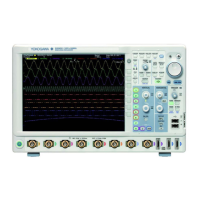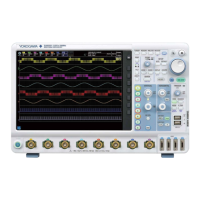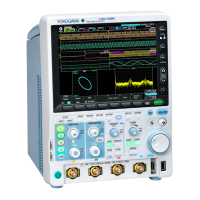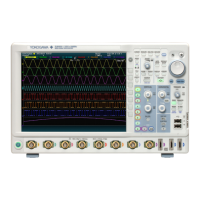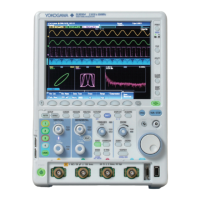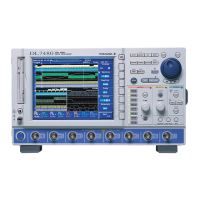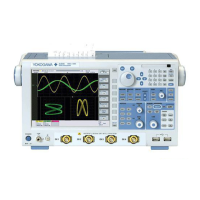5-150
IM 710105-17E
:SEARch:SELect? MAXimum
Function Queries the number of detected points.
Syntax
:SEARch:SELect? {MAXimum}
Example
:SEARCH:SELECT? MAXIMUM
-> :SEARCH:SELECT 100
Description If there are no detected points, the DLM2000
returns “NAN.”
:SEARch:SKIP?
Function Queries all skip mode settings.
Syntax
:SEARch:SKIP?
:SEARch:SKIP:DECimation
Function Sets or queries the number of detected points that
will be skipped in skip mode.
Syntax
:SEARch:SKIP:DECimation {<NRf>}
:SEARch:SKIP:DECimation?
<NRf> = 1 to 9999
Example
:SEARCH:SKIP:DECIMATION 1
:SEARCH:SKIP:DECIMATION?
-> :SEARCH:SKIP:DECIMATION 1
:SEARch:SKIP:HOLDoff
Function Sets or queries how long searching will be
skipped.
Syntax
:SEARch:SKIP:HOLDoff {<Time>}
:SEARch:SKIP:HOLDoff?
<Time> = 0.1 ns to 1 s
Example
:SEARCH:SKIP:HOLDOFF 0S
:SEARCH:SKIP:HOLDOFF?
-> :SEARCH:SKIP:HOLDOFF 0.000E+00
:SEARch:SKIP:MODE
Function Sets or queries the skip mode.
Syntax
:SEARch:SKIP:MODE {DECimation|
HOLDoff|OFF}
:SEARch:SKIP:MODE?
Example
:SEARCH:SKIP:MODE DECIMATION
:SEARCH:SKIP:MODE?
-> :SEARCH:SKIP:MODE DECIMATION
:SEARch:SPOint
Function Sets or queries search start point.
Syntax
:SEARch:SPOint {<NRf>}
:SEARch:SPOint?
<NRf>=−5to5divisions(instepsof10divisions/
display record length)
Example
:SEARCH:SPOINT−1
:SEARCH:SPOINT?
−>:SEARCH:SPOINT−1.000E+00
:SEARch:TWINdow
Function Sets or queries which window will display the
detected points.
Syntax
:SEARch:TWINdow {Z1|Z2}
:SEARch:TWINdow?
Example
:SEARCH:TWINDOW Z1
:SEARCH:TWINDOW?
-> :SEARCH:TWINDOW Z1
:SEARch:TYPE
Function Sets or queries search type.
Syntax
:SEARch:TYPE {EDGE|QUALify|PWIDth|STA
Te|SWIDth}
:SEARch:TYPE?
Example
:SEARCH:TYPE EDGE
:SEARCH:TYPE?
-> :SEARCH:TYPE EDGE
:SEARch:WIDTh?
Function Queries all pulse width search settings.
Syntax
:SEARch:WIDTh?
:SEARch:WIDTh:HYSTeresis
Function Sets or queries the pulse width search level
hysteresis.
Syntax
:SEARch:WIDTh:HYSTeresis {<NRf>}
:SEARch:WIDTh:HYSTeresis?
<NRf> = 0.3 to 4 divisions in 0.1 steps
Example
:SEARCH:WIDTH:HYSTERESIS 1
:SEARCH:WIDTH:HYSTERESIS?
-> :SEARCH:WIDTH:HYSTERESIS 1.0
:SEARch:WIDTh:LEVel
Function Sets or queries the pulse width search level.
Syntax
:SEARch:WIDTh:LEVel {<NRf>|<Voltage>}
:SEARch:WIDTh:LEVel?
<NRf> = See the DLM2000 Features Guide for
this information.
Example
:SEARCH:WIDTH:LEVEL 1V
:SEARCH:WIDTH:LEVEL?
-> :SEARCH:WIDTH:LEVEL 1.000E+00
Description When the probe type is set to current, this
command sets or queries the <Current> value.
:SEARch:WIDTh:POLarity
Function Sets or queries the pulse width search level
polarity.
Syntax
:SEARch:WIDTh:POLarity {HIGH|LOW}
:SEARch:WIDTh:POLarity?
Example
:SEARCH:WIDTH:POLARITY HIGH
:SEARCH:WIDTH:POLARITY?
-> :SEARCH:WIDTH:POLARITY HIGH
5.23 SEARch Group
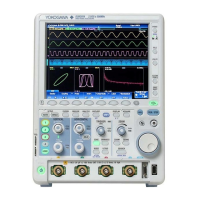
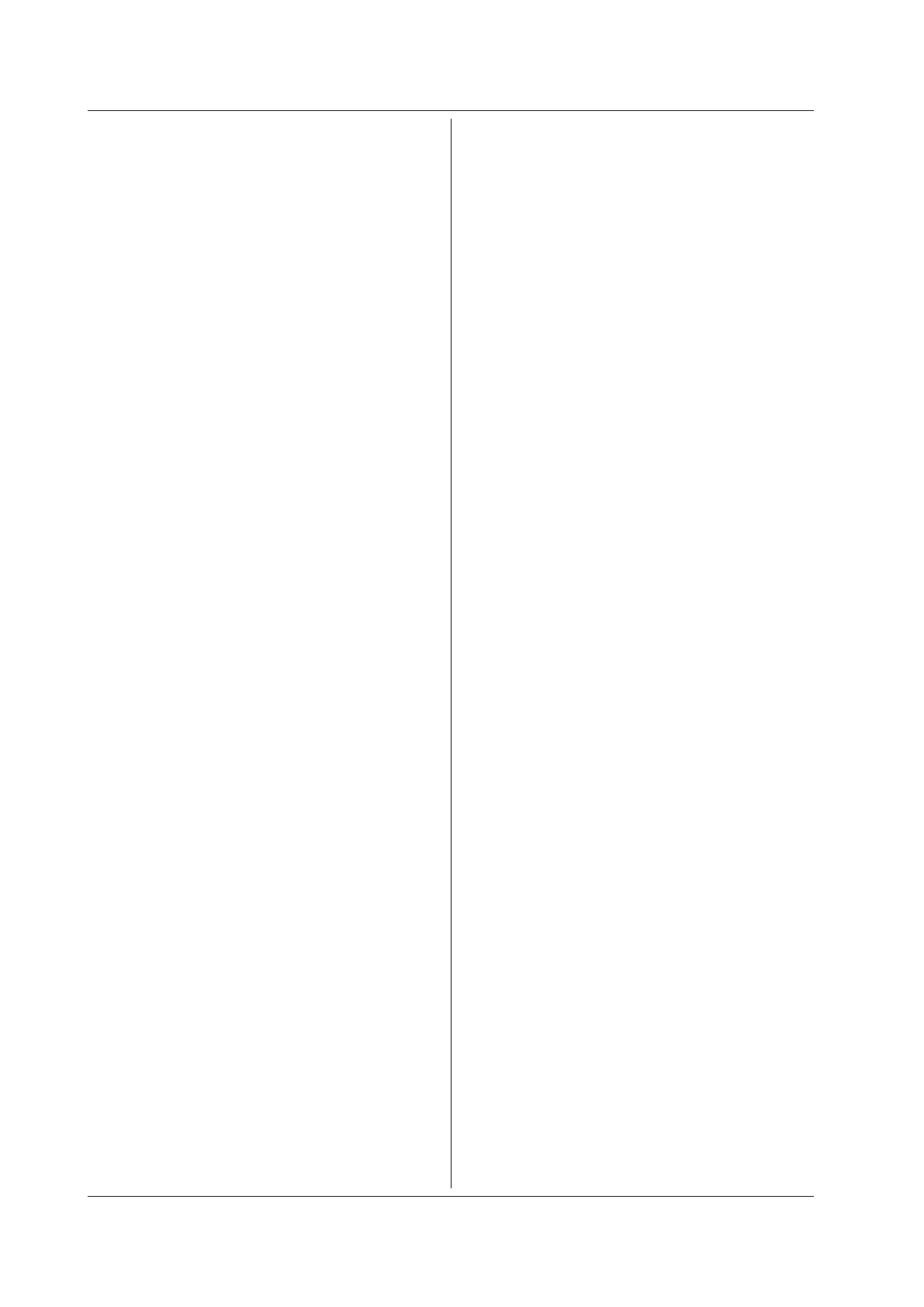